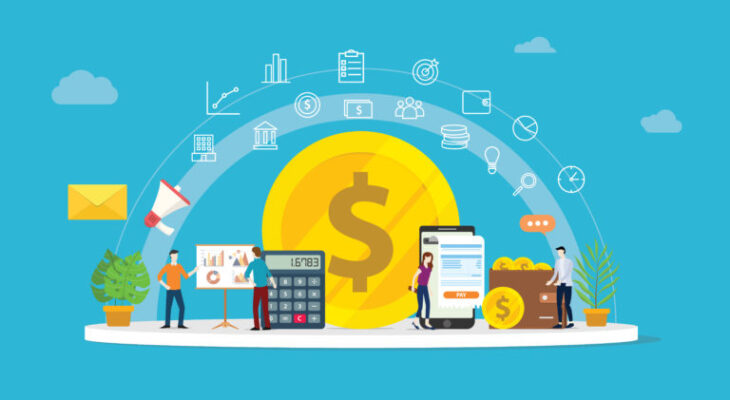The fintech industry in the Philippines has been experiencing remarkable growth in recent years, driven by the country’s expanding digital economy and a population of over 110 million people. In this article, we will delve into the current state of fintech in the Philippines, its impact on financial inclusion, and how it is empowering Filipinos to take control of their financial future.
Fintech Landscape in the Philippines
The fintech market in the Philippines is expected to reach USD 10 billion by 2025, propelled by the rise of mobile and internet usage, a burgeoning middle class, and the government’s push towards a cashless society. Fintech companies are offering a wide range of services, including e-wallets, digital lending, and online payment platforms. Among these, e-wallets have gained immense popularity, with over 30 million Filipinos using them for various transactions such as bill payments, remittances, and purchases. Digital lending platforms are also making significant strides in the country, providing access to credit for communities that are underserved and often excluded from traditional banking systems.
Impact on Financial Inclusion
Fintech has emerged as a potent tool to drive financial inclusion, allowing access to financial services to previously marginalized communities. In the Philippines, over 78 million adults, which is about 77% of the population, do not have a formal bank account, limiting their ability to access basic financial services. Fintech companies have filled this void by offering digital solutions that are affordable, convenient, and accessible to everyone, regardless of their geographical location, socio-economic status, or educational background.
Digital lending platforms have emerged as a game-changer in the country, providing credit to small business owners, farmers, and individuals excluded from formal banking systems. E-wallets have also been instrumental in promoting financial inclusion, enabling millions of unbanked Filipinos to transfer money, pay bills, and make purchases without needing a traditional bank account.
Empowering Filipinos
Fintech has not only driven financial inclusion in the Philippines but also empowered Filipinos to take charge of their financial future. Digital financial services have made it easier for Filipinos to manage their finances, save for their future, and invest in their goals. With access to digital financial services, Filipinos can now send and receive money from anywhere in the world, access credit for their businesses or personal needs, and pay their bills from the comfort of their homes.
E-wallets have become a popular savings tool among Filipinos, with features such as automated savings and budget tracking. These features have made it easier for Filipinos to save money and achieve their financial goals. Digital lending platforms have also empowered Filipinos to start their own businesses, invest in their education, and improve their living standards.
Digital lending platforms in Philippines

Digital lending platforms are a key component of the fintech landscape in the Philippines. These platforms use technology to offer loans and credit to individuals and businesses who may not have access to traditional banking services, due to various factors such as lack of credit history, collateral, or documentation.
Digital lending platforms in the Philippines typically provide small, short-term loans that are designed to help individuals and businesses meet their immediate financial needs. These loans are often provided at a higher interest rate compared to traditional banks, but they are also more accessible and quicker to obtain, making them a viable option for those who need quick access to cash.
One of the key benefits of digital lending platforms is their ability to reach communities that are underserved or excluded from traditional banking systems. Many Filipinos, particularly those living in rural areas, do not have access to formal banking services due to the lack of physical bank branches or credit history. Digital lending platforms have been able to bridge this gap by using alternative data sources such as social media and mobile phone usage to assess creditworthiness.
Digital lending platforms in the Philippines have also been instrumental in promoting financial inclusion and empowering small business owners and entrepreneurs. Many Filipinos rely on small businesses as their primary source of income, but they often face challenges in accessing credit from traditional banks. Digital lending platforms have provided a viable alternative for these individuals, allowing them to obtain the financing they need to start or grow their businesses.
However, it is important to note that the rapid growth of digital lending platforms has also raised concerns about consumer protection and responsible lending practices. The Bangko Sentral ng Pilipinas, the country’s central bank, has implemented regulations to promote responsible lending and protect consumers from predatory lending practices. It is important for digital lending platforms to comply with these regulations and to prioritize responsible lending practices to ensure that they are providing affordable and accessible credit to Filipinos in need.
Loan Apps in Lending Platforms
Loan apps are a key feature of digital lending platforms in the Philippines. These apps allow borrowers to easily apply for loans and manage their loan accounts through their mobile devices. With the widespread use of smartphones in the Philippines, online loan apps have become a popular and convenient way for Filipinos to access credit.
Loan apps in digital lending platforms typically offer a user-friendly interface that allows borrowers to easily apply for loans and track their loan status. Many loan apps also provide features such as loan calculators, repayment schedules, and automatic reminders to help borrowers manage their loans and avoid late payments.
One of the main advantages of loan apps in digital lending platforms is their speed and convenience. Borrowers can apply for loans and receive approval within a matter of minutes, without the need to visit a physical bank branch or provide extensive documentation. Loan apps have made it possible for Filipinos to access credit quickly and easily, which is especially important for those who need emergency funds or have urgent financial needs.
However, it is important for borrowers to be aware of the potential risks of using loan apps. Some loan apps may have hidden fees or high interest rates that can lead to debt traps if borrowers are unable to repay their loans on time. It is important for borrowers to carefully review the terms and conditions of loans and to only borrow what they can afford to repay.
In addition, borrowers should also be cautious about sharing personal and financial information through loan apps. While loan apps use encryption and other security measures to protect user data, there is still a risk of identity theft or fraud. Borrowers should only use loan apps from reputable lenders and should avoid sharing sensitive information through public Wi-Fi networks or other unsecured connections.
Overall, legit loan apps are a convenient and useful feature of digital lending platforms in the Philippines. They allow borrowers to access credit quickly and easily, and can be a viable alternative to traditional banking services. However, it is important for borrowers to exercise caution and to only borrow what they can afford to repay, to avoid falling into debt traps or exposing themselves to fraud.
Conclusion
Fintech is revolutionizing the financial sector in the Philippines, providing access to financial services to millions of Filipinos who were previously excluded from the formal banking system. The growth of fintech has created opportunities for financial inclusion, driving economic growth, and empowering individuals to take charge of their financial future. As the fintech industry in the Philippines continues to evolve and mature, it will continue to play a pivotal role in unlocking financial inclusion and empowering Filipinos to achieve their financial goals.





